Are you looking for a 2-week South America itinerary? (3-week?)
First things first, South America is huge. Unlike it’s with Europe, it’s not easy or straightforward when it comes to choosing destinations to visit during your 2-week vacation to the continent. 2 weeks in South America — it won’t even scratch the surface. But it’s doable. But as the distances are huge, and travel times are lengthy, do yourself a favour and stick to some 4 destinations.
To book this whole thing as a single journey, we recommend Kiwi Nomad. It’s built for that — Kiwi makes it super simple and cheap.
Below you’ll find both our 2-week and 3-week South America itineraries.
See also:
- 1-Month Southeast Asia Itinerary
- 2-Week Europe Itinerary
- Kiwi Nomad Review: If You’re Flexible, Then You’ll Love It!
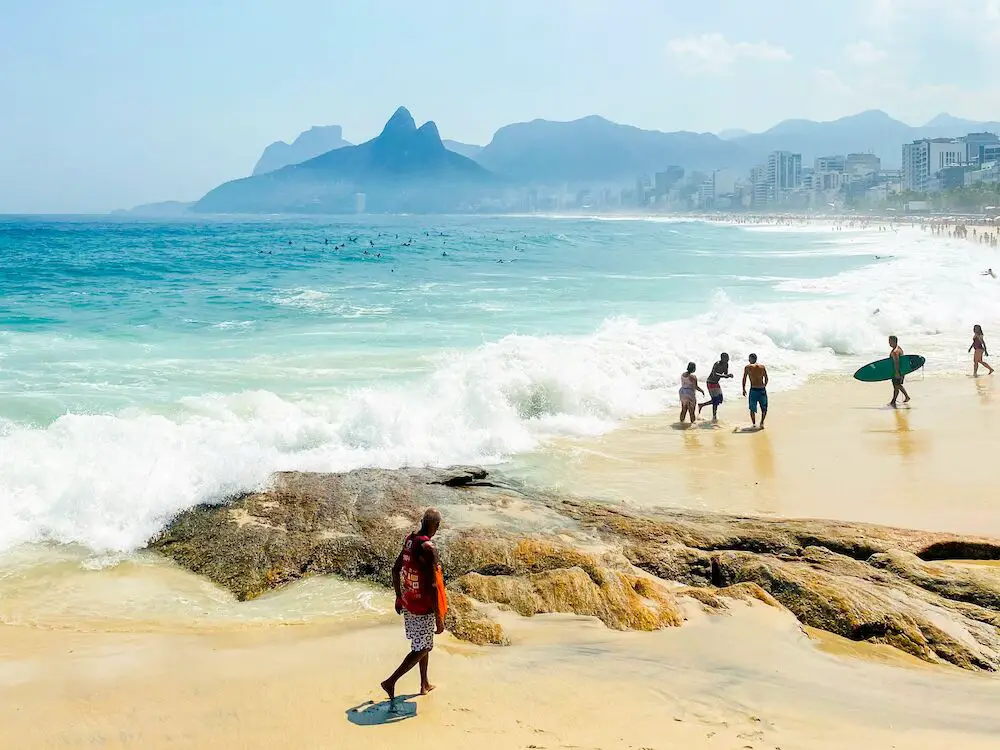
What to Take Into Account When Traveling to South America?
Just recently we published a 2-week Europe itinerary.
If you look at it, you’ll see that the flights in Europe are short and cheap.
When you plan a trip to South America, take into account that it’s completely different than traveling in Europe. Not because of culture (that, too, in fact matters) but because of distances and prices. Flights in South America are way more expensive and longer. Mostly, you won’t get cheap last-minute flights in South America, nothing like in Europe and with airlines like Wizz Air and easyJet.
And not only that. Not only the flights are more expensive, but hotels, transportation and guided tours can be expensive, too. There are both cheap and expensive countries in South America. Keep this in mind.
So, don’t expect cheap, 2-hour-long 20 EUR flights. Also — when booking a journey with Kiwi Nomad, pay attention to each leg of the journey as direct flights are not always possible in South America. In this situation, Kiwi Nomad will offer you connecting flights. Pay attention if it’s an airline-protected connecting flight or a self-transfer. We would recommend you to avoid self-transfer flights, unless there’s a long (several-hour-long) layover between the flights.
Super short layovers are super risky with self transfer.

Why Kiwi Nomad?
What makes Kiwi Nomad a great choice in this case?
The biggest advantage of booking flights with Kiwi Nomad is that you can book multiple flights with a single click. You set the dates, the total duration of your trip and choose cities that you want to visit. Kiwi Nomad finds the flights and creates the itinerary based on that.
In less than a minute you are ready to make a booking.
It’s one booking for the whole journey.
How to Book Flights With Kiwi Nomad?
Go to https://www.kiwi.com/en/nomad.
Choose your origin airport or city. Set departure date. It can be a period of time. Set trip length. Add destinations you would like to visit. Set length of stay in each destination. You don’t necessarily have to do the last bit, as Kiwi Nomad sets the length of stay itself. Unless you want to change it and set it shorter or longer.
If you would like to end trip at a different location, click “Return to a different location” and choose the final destination.


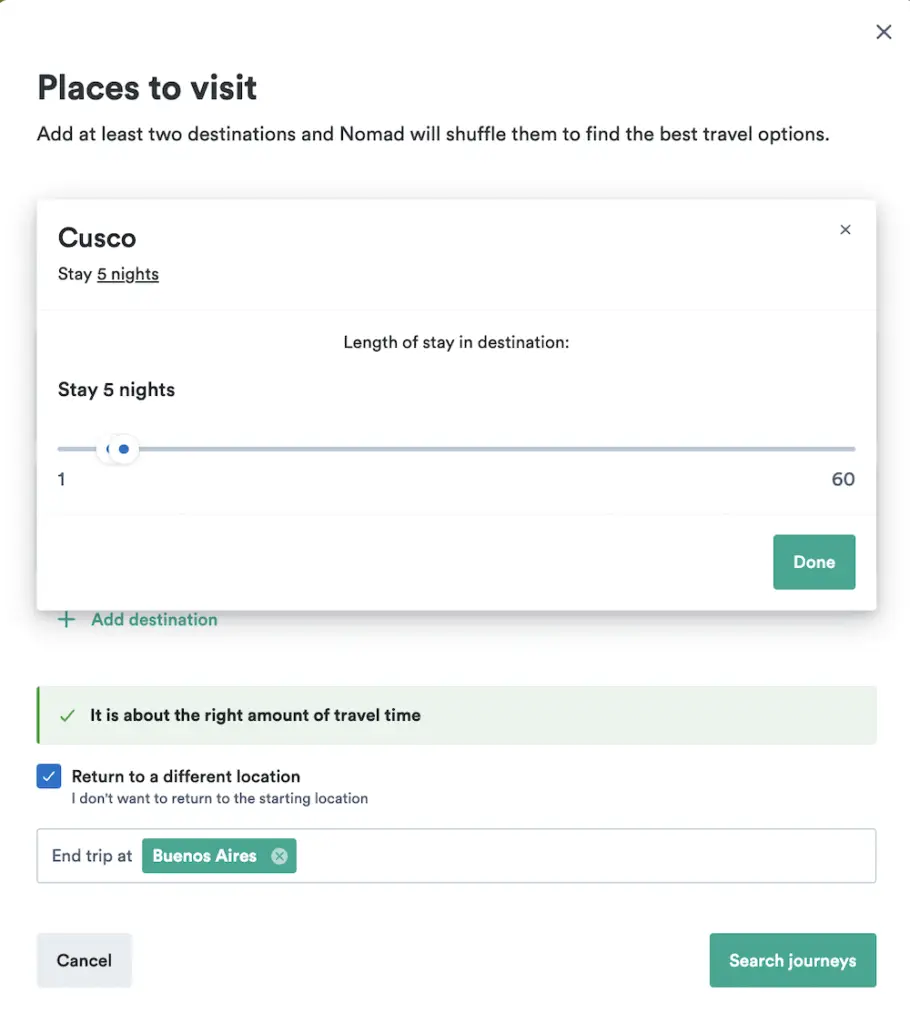
When you have done it, press “Search journeys”.
Kiwi Nomad will find all the possible itineraries.
There will be multiple options.
Duration of stay at each destination and order might vary. So will the price. Press “Show Details” to see more information about the flights. You can apply filters (e.g., only direct flights) and sort the results (best, cheapest, fastest).
Keep in mind that Kiwi will shuffle your destinations to find the best and cheapest flights. They won’t be in the same order you choose.
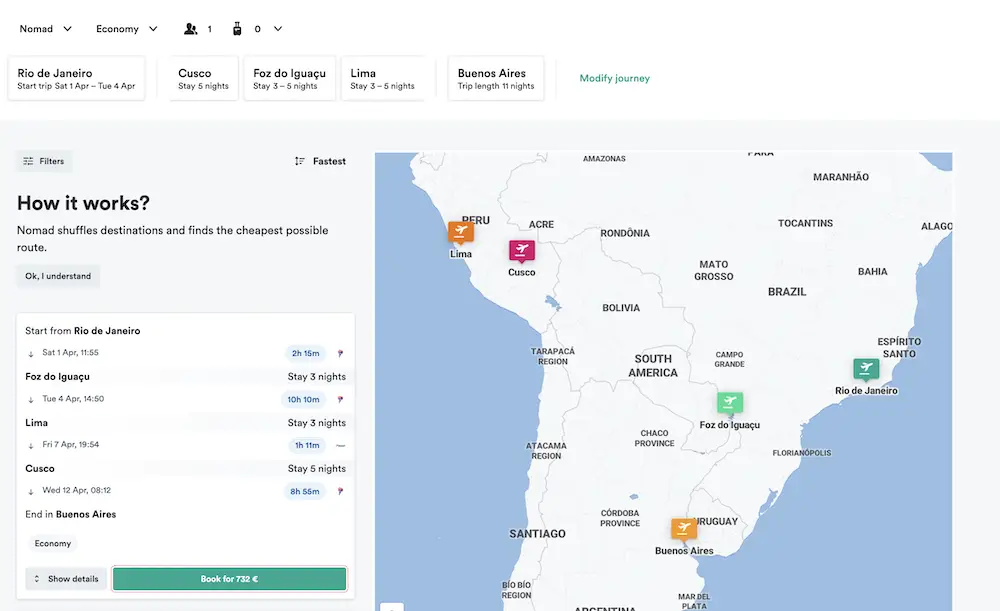
Choose the option you like the most and press “Book”.
In my case, it’s 732 EUR for 4 flights.
Fill in the passenger details (name, e-mail, date of birth, etc), pay. And that’s it. You have booked all of these flights – sometimes 10+ flights – with a single reservation. You don’t have to search for flights any more.
Your South America itinerary is ready and booked!
Are these considered connecting flights? No, these are so-called self-transfer flights. These are separate flights. You might be flying with several different airlines and you’ll have to follow their baggage rules, etc. But, since you are booking with Kiwi, these are flights that come with Kiwi protection.
Booking Flights For a 3-Week South America Trip
As you can see, booking flights with Kiwi Nomad is very easy. This example shows how to book a 2-week South America itinerary. The same applies to 3-week South America itinerary. You have to follow the same steps to book it.
Here’s one example for 3 weeks in South America.
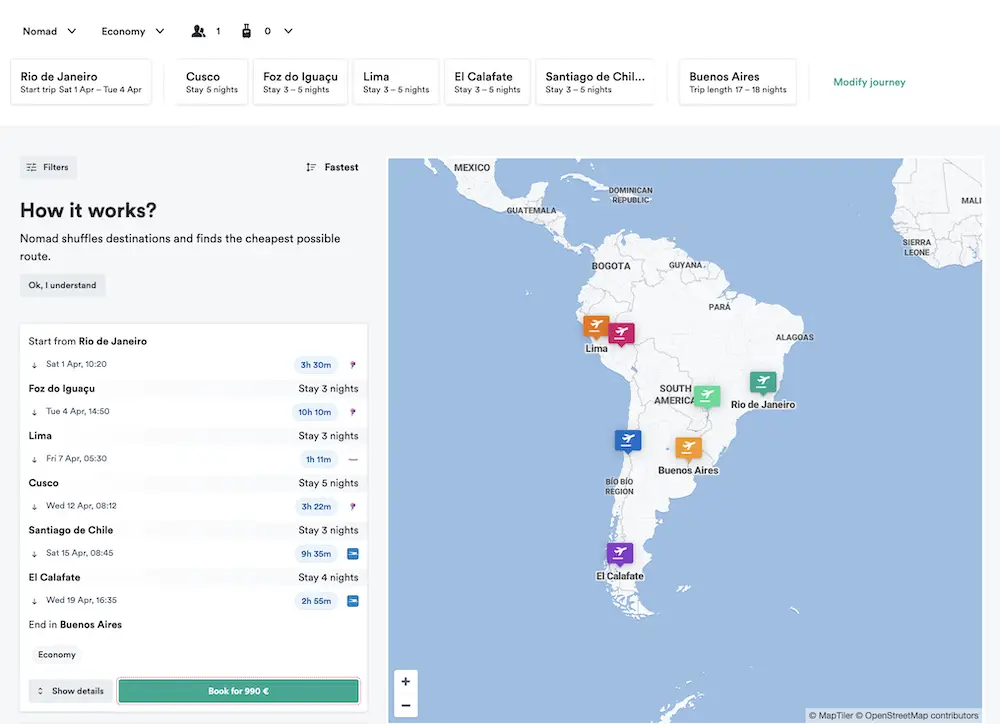
Baggage
Do not forget about the baggage.
Many of the itineraries sold on Kiwi do not not include the baggage fare. Baggage allowance is stated when booking a flight with Kiwi Nomad. If the baggage allowance is not included, and you want to travel with checked bag, you’ll have to pay extra. Baggage allowance can cost a lot, and easily could reach 200 EUR per journey!
Read more:
- Connecting Flight Baggage Transfer: Different Airlines
- What is Checked Baggage?
- What is Carry-On Bag / Baggage?
Pay Attention to Self-Transfer Flights in South America
Not that they are worse in South America.
Self transfers are somewhat risky everywhere and always. It’s just that – as flights are longer in South America, also self transfers are more common, and you may book a very tricky self transfer without knowing that.
Do you want the fool-proof method? Avoid all connecting flights (flights with two or more legs). When that’s not possible, choose only airline-protected connecting flights. To see what is what, press “Show Details” to see more information about each flight. If you see a connecting flight in the selected itinerary, it’s better to avoid such an itinerary.
If all itineraries are with connecting flights, look for ones without self-transfer flights. If it’s a self-transfer flight, it will be shown in the itinerary as a such.
Self transfer is the only or best option?
Choose one with several hours between the flights.
Just to clarify things one more time. Your whole trip around South America is a self transfer journey. All these flights between countries in South America are separate flights.
Yes, you may have booked it as a single journey with Kiwi. Yes, you may have chosen Kiwi protection. And, yes, it makes this whole trip more safe. But, still, things may go wrong. And if they do — it will take time for solutions to be found. Even, if it’s Kiwi not you looking for a solution.
Hence, this last paragraph on self-transfers. Don’t make things more complicated for yourself, by choosing an itinerary with TOO MANY FLIGHTS, with too many self transfers. More self transfers equals higher chance of things going wrong.
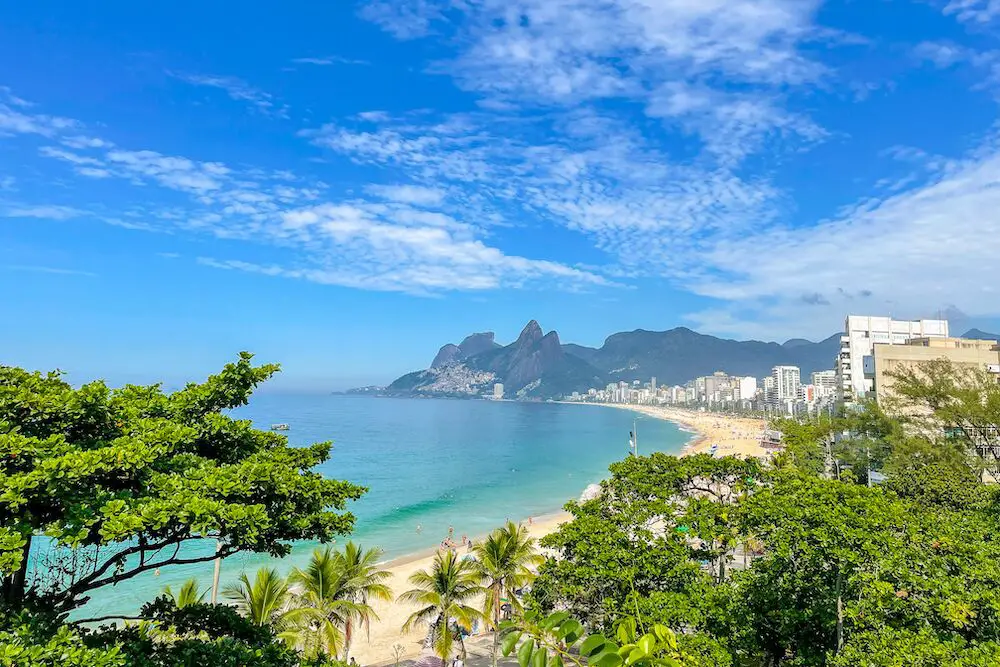
2-Week South America Itinerary (With Flights)
We recommend you to start a trip in Rio de Janeiro, Brazil.
Rio de Janeiro is one of the best places to start a trip around South America. There are direct flights to Rio from Europe. And to make things a bit easier — you can finish this trip in Buenos Aires, the capital of Argentina.
- You can book two separate flights. One flight to Rio de Janeiro, and another one back from Buenos Aires.
- Or, you can book a multi-city flight.
And then use Kiwi Nomad to book the rest of the flights.
2 Days in Rio de Janeiro
Rio de Janeiro is one of the most exciting cities in South America.
To fully appreciate the city, you need way more than 2 days. But since your schedule is very busy, we add only 2 days in Rio to the itinerary. You may choose to change the itinerary as you wish. When you add destinations when using Kiwi Nomad, you can set length of stay as you wish.
Day 1: In the morning, visit the iconic beaches of Rio — Copacabana, Ipanema and Leblon. Hike the Morro da Urca trail. Once you are at the top of Morro da Urca, take a cable car to Sugarloaf, one of the most iconic mountains in all of Rio. Alternatively, you can take the cable car all the way to Sugarloaf mountain.
Day 2: Visit Christ the Redeemer Statue at the top of Corcovado mountain, one of the New 7 Wonders of the World. Visit Parque Lage which is located at the bottom of Corcovado mountain. Explore Lapa, Santa Teresa and Centro neighborhoods. Join a guided tour of Lapa, Santa Teresa and Centro to experience the best of these neighbourhoods.
Head to a Churrascaria for a Brazilian BBQ.
More Rio de Janeiro itinerary ideas and Rio de Janeiro tips:
- Hike Pedra da Gavea. After the hike, relax at a Praia da Barra da Tijuca (Rio’s longest beach). You can get there by taking a metro, and then walking.
- Hike the Trilha (trail) Dois Irmãos. It’s one of the most iconic hiking trails in Rio de Janeiro. It goes through favela, but it considered safe.
- Visit the Botanical Gardens of Rio. The botanical garden is one of the best places for a walk in Rio de Janeiro. And the palm trees there – so tall!
- Visit Maracana stadium.
- Explore Tijuca National Park. There are plenty of hiking trails and viewpoints in the national park. Vista Chinesa is one of the easiest to get to.
- Go on a day trip to Paraty, one of the most beautiful cities in Brazil. It has beautiful colonial architecture in its old town, and there are several wonderful beaches in the area (e.g., Praia Das Laranjeiras, Praia do Sono, Praia do Cruzeiro, Praia do Cepilho, Praia do Cachadaço, etc.)
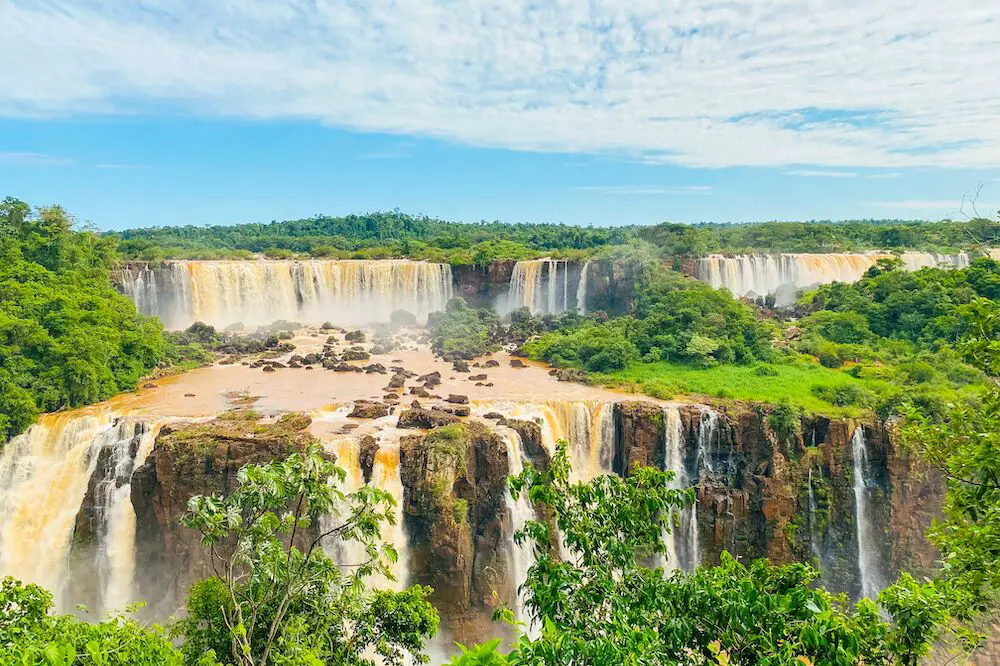
3 Days in Foz do Iguaçu
Foz do Iguaçu is a city in Brazil.
It is right on the border with Paraguay and Argentina.
The city is a gateway to Iguazu Falls / Iguaçu Falls (a spectacular place!). Made up of a network of 275 cascades, Iguazu Falls is the largest waterfall system in the world. Besides the waterfalls, there are other awesome things to do and places to visit, with Parque das Aves (Bird Park) and the Itaipu Dam being among the best places to visit in Foz do Iguaçu.
Day 3: Arrive to Foz do Iguaçu in the afternoon.
Go on a panoramic helicopter ride over Iguazu Falls. Helisul offers panoramic flights over the falls. Walk-ins are possible. So, there’s no need to book online. And they’re open until 5 pm (however make sure you check before your trip). The ticket office is located right next to the helipad.
Alternatively, book a helicopter ride online.
Day 4: Explore the waterfalls in the morning. It takes around 3 hours to see the waterfalls on the Brazilian side. Visit the Bird Park (Parque das Aves). It is home to rescued birds, including a number of macaws and toucans. Located near the falls, Parque das Aves is one of the best places to visit in Foz do Iguaçu.
Day 5: Visit the Iguazu Falls on the Argentinian side. The Argentinian side is known for extensive walking paths that lead close to the waterfalls. As about 80% of the waterfalls are on the Argentinian side, there’s an even larger area to explore. But it doesn’t mean you should skip the Brazilian side. No!
Return back to the Brazilian side.
More Foz do Iguaçu itinerary ideas and tips:
- If you can, visit the Itaipu Dam. It’s one of the largest dams in the world in terms of installed power. On specific days, can also visit the power plant itself. If choosing the latter, don’t forget to bring your passport with you.
- And if you are going to the Itaipu Dam, do not miss the Bela Vista Biological Refuge. It’s a sanctuary for rescued endangered animals including ocelots and jaguars. Combo tickets to both of the places are available.
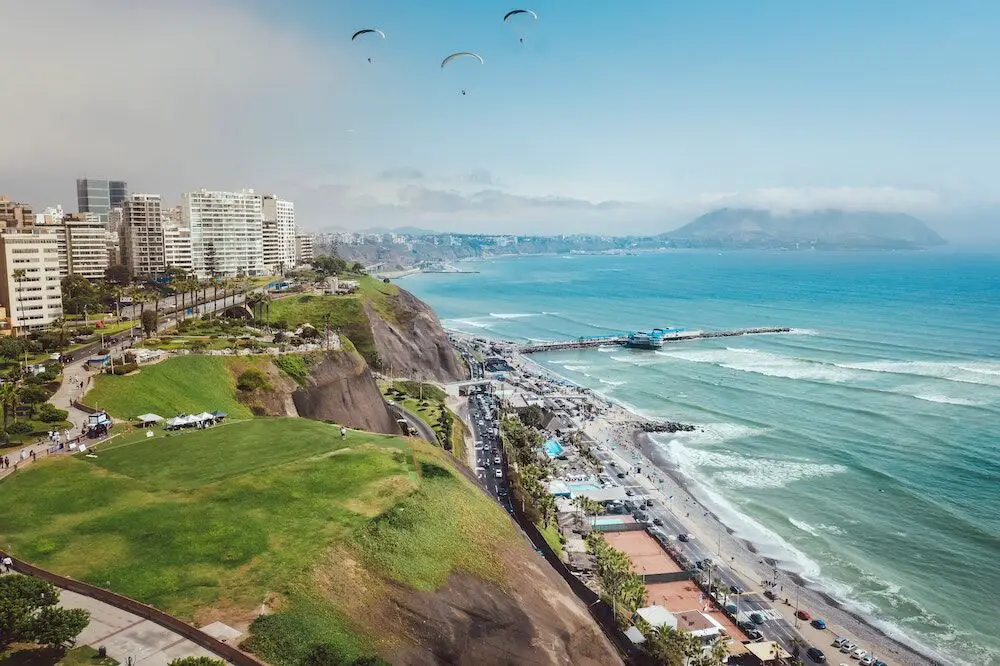
3 Days in Lima
Lima is the capital and the largest city of Peru.
Located on the country’s Pacific coast, the city offers breathtaking views of the ocean from its massive seaside cliffs. Lima is known for its gorgeous colonial architecture, and is considered to be the gastronomical capital of South America. Do you love food? Definitely add Lima to your South America trip.
Day 6: Day of travel. In my example, I would arrive to Lima almost at midnight. Even if it’s not the same for you, it’s a good idea to take it easy and don’t plan too much for this day. You don’t want to get burned out.
Day 7: See the best sights in the UNESCO-listed Historic Centre of Lima. Visit the Basilica and Convent of San Francisco, the Basilica and Convent of San Pedro and Cathedral of Lima. Do not miss the beautiful Convent of Santo Domingo. Marvel at the unique brick facade of Iglesia de La Merced. Admire the beauty of Palacio de Torre Tagle.
The Historic Centre is known for its balconies. Built in the late 17th and 18th centuries, the balconies are important historical features of the city.
Visit Lima’s main square, Plaza de Armas.
Day 8: Explore Miraflores. Stroll along Miraflores Malecón (promenade) which boasts wonderful views of the Pacific Coast. See the remains of an ancient pyramid in Huaca Pucllana Site Museum. Remains of ancient civilisation in the heart of the modern Miraflores!
Lima is considered to be the gastronomical capital of South America. Join a guided Lima culinary tour to learn more about Peruvian cuisine. Try ‘Chifa’ cuisine, a unique blend of Chinese and Peruvian cuisines.
Take an evening flight from Lima to Cusco. If that works out, you have extra half a day to explore Lima. If you are into it, paraglide over the coast of Lima. Or try yourself at surfing. There are some great surfing spots in Lima.
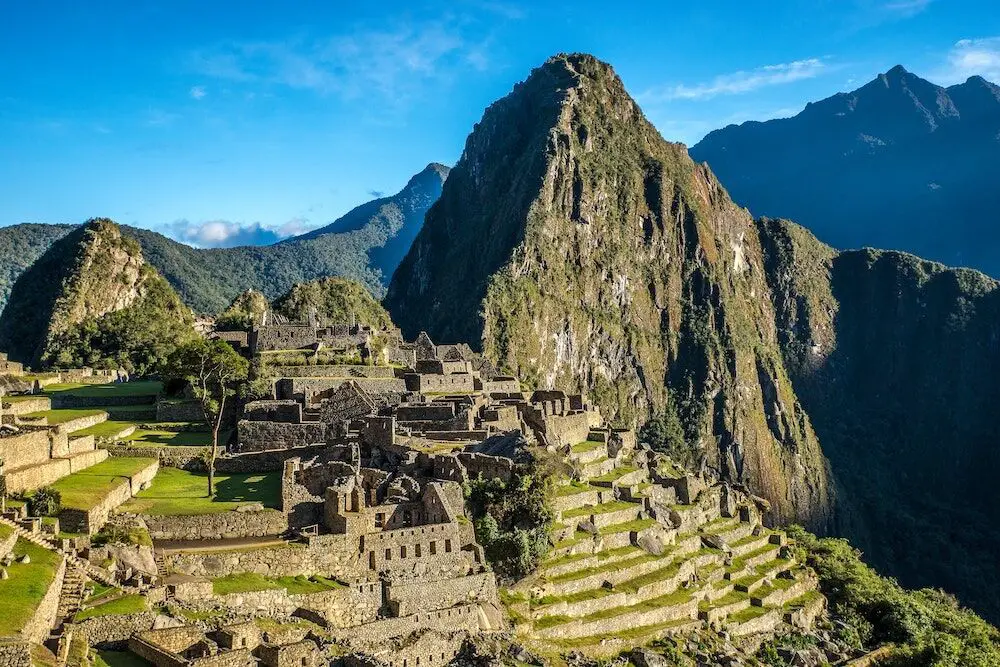
5 Days in Cusco, Peru (4 Full Days in Cusco)
Cusco is a city in the Andes mountain range.
Once the capital of the Inca Empire, it boasts a rich history, and is a UNESCO World Heritage Site. Cusco is the gateway to the world-famous Incan citadel, Machu Picchu. Due to the proximity to Machu Picchu and other spectacular sites of Peru, Cusco has become a major tourist destination.
Day 8: Explore Lima until your flight in the evening. Arrive in Cusco late.
Day 9: As Cusco is located at 3,399 meters (11152 feet) above sea level, it’s important to acclimatise. Take it easy on your first day as you are not accustomed to high altitudes yet. If you feel well enough, explore the city — see Cusco’s Plaza de Armas, explore the Historic Center of Cusco and San Blas, visit Qoricancha Temple and go shopping at the famous San Pedro Market.
Day 10: Hike the Rainbow Mountain (Vinicunca) and see the unique colorful earth of the mountain range. The easiest way to go to the Rainbow Mountain is to book a guided Rainbow Mountain tour from Cusco. These tours are affordable.
Day 11: Go on a day trip to Machu Picchu from Cusco.
Machu Picchu is a 15th-century Inca citadel located on a mountain ledge. It is another Wonder of the World (you are going to be visiting another Wonder of the World in Rio, Christ the Redeemer). As you have so little time in Cusco, we recommend you to go on a Machu Picchu day tour from Cusco. It’s pricey (around 350 USD), but worth it.
Day 12: Go on a Sacred Valley tour from Cusco. Visit the famous Pisac market, the picturesque Chinchero village and Ollantaytambo fortress in the mountains. On your way enjoy spectacular views of the Andes.
More Cusco itinerary ideas and Cusco tips:
- Do the Inca Trail to Machu Picchu (4-day-trip). Book the adventure from GetYourGuide — Inca Trail to Machu Picchu 4-Day Trek.
- Explore the salt mines and the archaeological site of Moray on a quad bike. If you prefer to book everything online, you can book a tour here.
- Go on a hiking tour to Humantay Lake. It’s a beautiful emerald lake located in the mountains, 4200 m (13800 ft.) above sea level.
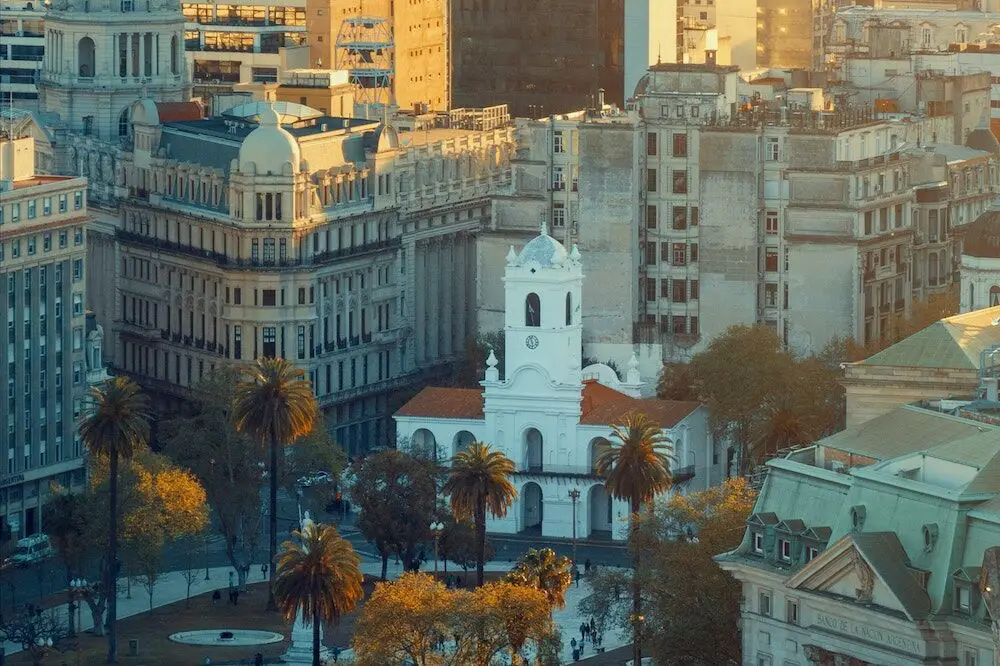
2 Days in Buenos Aires
Buenos Aires is the capital of Argentina.
Known for its electric nightlife and tango scene, Buenos Aires is a fun city to visit in South America. Visitors also love its delicious food (steak is the king of the cuisine in Argentina!), historical buildings in the city centre and street art.
Day 13: Arrive in the evening. Enjoy a delicious dinner at one of the city’s many parrillas (steakhouses). Have a rest at your hotel.
Day 14: Explore the colourful La Boca neighborhood, Buenos Aires’s most colorful neighborhood. In La Boca, you can often see tango dancers practicing in the streets. Explore the Centro (the city centre) where many major tourist attractions are located. The city is known for its impressive street art.
If you are interested in graffiti and murals, join a guided Buenos Aires street art tour to learn more about Argentina’s street art and explore the city’s most eclectic neighborhoods.
If you are looking for a fun night out, Buenos Aires is the place! Enjoy the city’s phenomenal nightlife and visit a tango club.
Fly home from Buenos Aires, Argentina.
Alternatively, you can choose to return back to Rio de Janeiro (instead of Buenos Aires) and spend two more days exploring Rio.
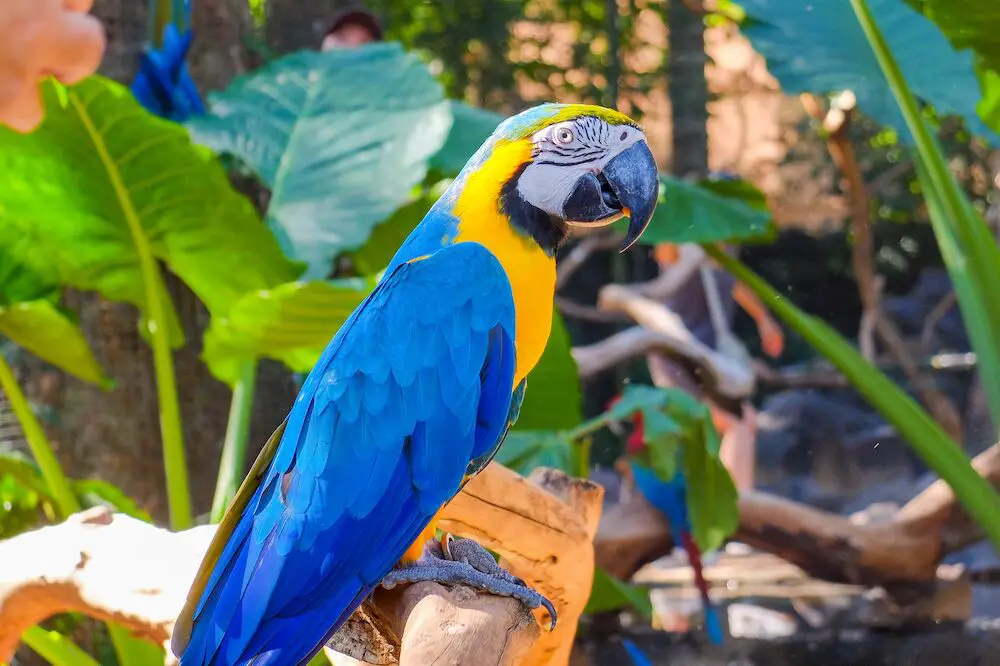
3-Week South America Itinerary (Recommended)
Yes, “you can do” South America in 2 weeks.
But of course, in 3 weeks in South America you will see and experience more. South America is a big continent with many different countries and cultures. So, the more time you have, the better you will understand the place.
2 Days in Rio de Janeiro
Day 1: First things first, visit Rio de Janeiro beaches – Copacabana, Ipanema, Leblon. And then visit Morro da Urca and Sugarloaf.
Day 2: Christ the Redeemer, Parque Lage. Lapa, Santa Teresa and Centro. Churrascaria for a Brazilian BBQ.
For a more detailed itinerary, see the 2-week itinerary (above).
3 Days in Foz do Iguaçu
Day 3: Arrive in the afternoon. Panoramic helicopter flight over Iguazu Falls.
Day 4: Iguaçu Falls (Brazilian side). Visit to the Bird Park (Parque das Aves).
Day 5: Waterfalls on the Argentinian side.
Hiking in Iguaçu National Park (Argentinian side).
For a more detailed itinerary, see the 2-week itinerary (above).
3 Days in Lima
Day 6: Day of travel and / or relaxation.
Day 7: UNESCO-listed Historic Centre of Lima. Plaza de Armas.
Day 8: Miraflores. Ancient pyramid in Huaca Pucllana Site Museum. If you are into cooking, Guided Lima culinary tour.
For a more detailed itinerary, see the 2-week itinerary (above).
5 Days in Cusco (4 Full Days in Cusco)
Day 8: Half day for exploring Lima. Flight in the evening. Arrive in Cusco late. If your flight arrives in the morning, spend the day relaxing and acclimatising.
Day 9: Acclimatisation day in Cusco. The city is located high in the mountains. If you feel well enough, explore the Historic Center of Cusco.
Day 10: Guided hiking tour to Rainbow Mountain (Vinicunca).
Day 11: Day trip to Machu Picchu from Cusco.
Day 12: Guided Sacred Valley tour from Cusco.
For a more detailed itinerary, see the 2-week itinerary (above).

3 Days in Santiago de Chile
Santiago de Chile is Chile’s capital and largest city.
The city is located in a valley surrounded by high snow-capped mountains. It is one of the most picturesque and beautiful South American capital cities. The city is known for its iconic views of the tall skyscrapers backed by snow-capped mountains. If you love both big cities and nature, you’ll love it.
Day 13: Spend the afternoon and evening exploring Santiago de Chile.
Just like any other South American country, Santiago de Chile also has the Plaza de Armas, the main square. See the beautiful architecture around the Plaza. In the evening, the square is bustling with people, vendors and musicians.
Day 14: Visit Maipo Canyon.
It is a picturesque canyon located 50 km southeast of Santiago. The canyon boasts beautiful valley and mountain views and nice hiking paths.
In the evening, enjoy 360º views from a glass-walled observation deck in the famous skyscraper, Gran Torre Santiago. This is one of the best things to do in Santiago de Chile, especially at sunset.
Day 15: Ride the Funicular de Santiago to the top of Cerro San Cristóbal. Enjoy the views of the city from the top of the hill. Visit Santa Lucía Park and Hill. Stroll through Plaza de Armas one more time.

4 Days in El Calafate, Argentina
Situated on a shore of Lake Argentino, El Calafate is a picturesque city in Patagonia. However, it’s not its picturesque location what draws tourists. El Calafate is the gateway to the famous Perito Moreno Glacier.
From here you can also visit other parts of the Los Glaciares National Park including Mount Fitz Roy, a must visit during your trip to South America.
Day 16: Arrival to El Calafate. Dinner and rest.
Day 17: See the Perito Moreno Glacier. It is one of the best places to visit in Patagonia. You can get there by bus or join a guided Perito Moreno glacier tour. During the guided tour, you’ll ascend the glacier and admire the majestic ice mass from a boat. This is so worth it!
In the evening (or at night), take a bus to El Chalten. Stay in El Chalten.
Day 18: El Chalten. Have an early start. Do the Fitz Roy hike. It is about 25 kilometers (15.5 miles) long. It takes about 9 hours to complete the hike.
Day 19: Some more hiking in El Chalten. There are a number of other walking and hiking trails in El Chalten. Do some shorter hike in the morning.
Return to El Calafate in the evening.
2 Days in Buenos Aires
Buenos Aires is the capital of Argentina.
Known for its electric nightlife and tango scene, Buenos Aires is a fun city to visit. Visitors also love its delicious food (steak is the king of the cuisine!), historical buildings in the city centre and street art.
Day 20: Arrive in the evening. Dinner at a parrilla (steakhouse).
Day 21: La Boca neighborhood, Centro. Street art tour. Night out and/or tango performance.
Flight back home.
For a more detailed itinerary for Buenos Aires, see the 2-week itinerary.
Do You Still Need Travel Insurance With Kiwi?
What’s the difference between Kiwi Guarantee and insurance?
Do you need both? It’s a very good idea to have both.
You see, when you are eligible, Kiwi Guarantee will give you a new flight right away. For free. Travel insurance won’t do that. They will pay you afterwards. At the same time, Kiwi Guarantee won’t protect you against anything else, like health problems abroad. That’s why it’s a good idea to have both — safe self-transfer flight (with Kiwi Guarantee) AND travel insurance.
Have you been to South America? Did you like it? Anything you would add to this 3-week / 2-week South America itinerary?
About the author:
Una is an organized globetrotter and foodie who’s been living a digital nomad lifestyle since 2013. She always starts her day early with a good book before diving into work. Apart from traveling and aviation, her other passions include gym, hiking and cycling. Una is also a strong proponent of AI technology. She firmly believes in its potential to simplify life and has often advocated for its wider adoption in our day-to-day activities. Her favorite airlines are Qatar Airways, Emirates, and KLM.
